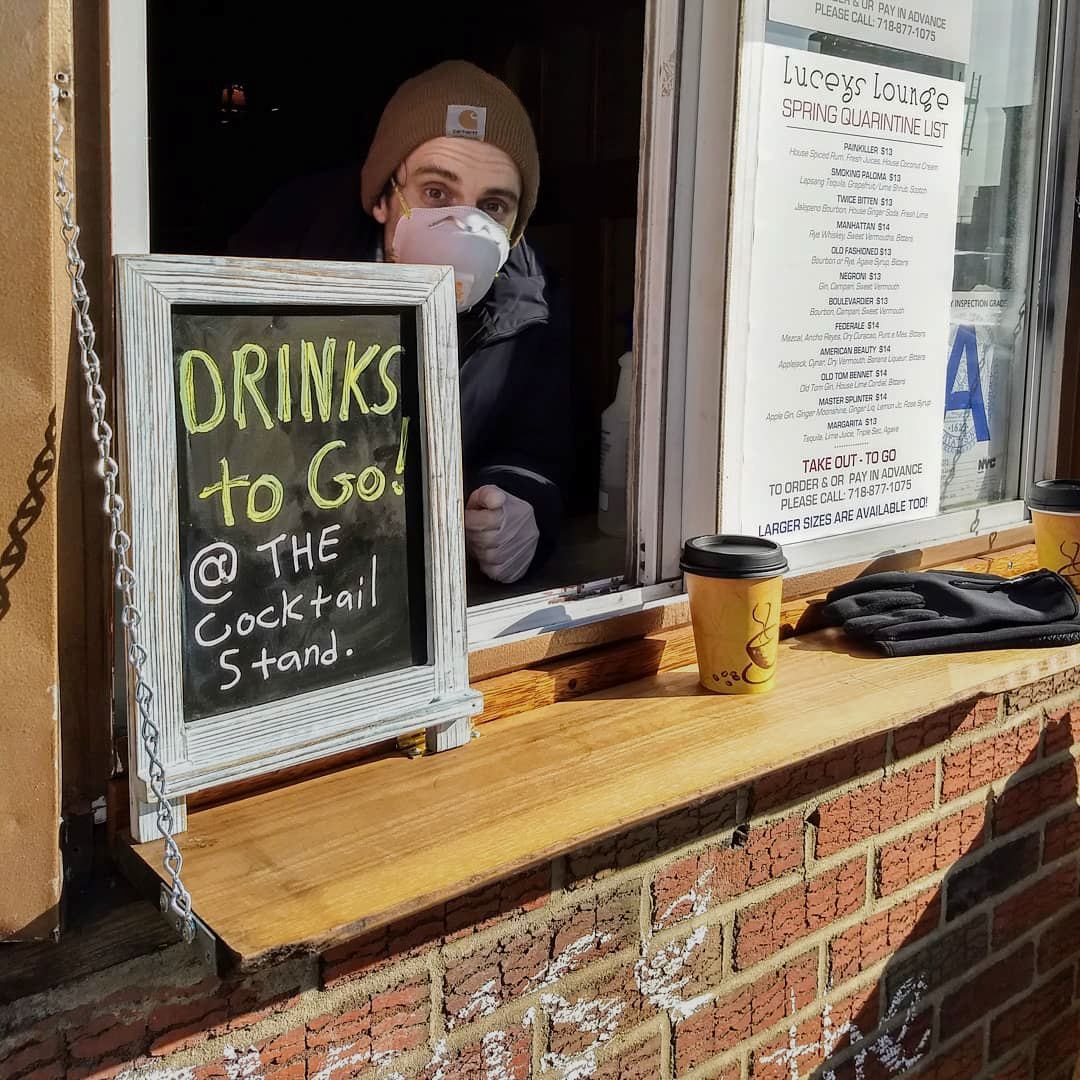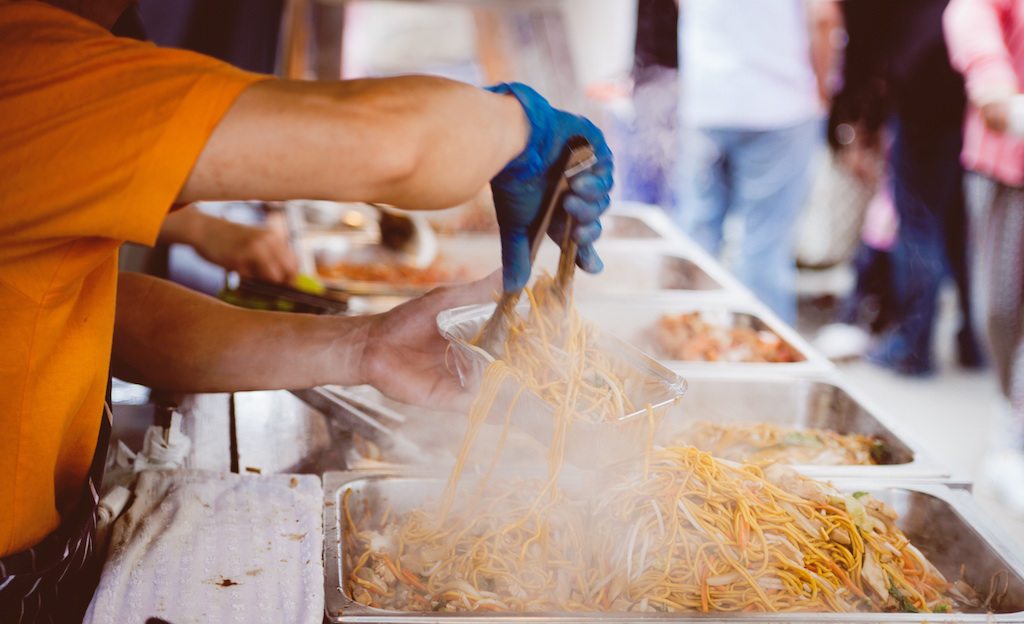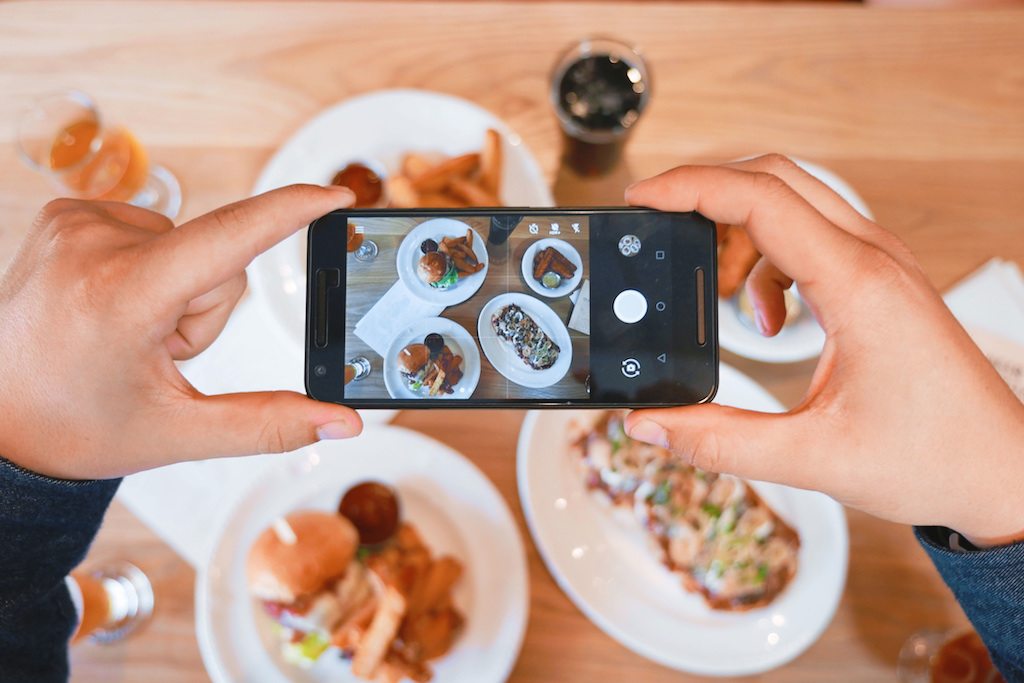Restaurant owners are hoping the modified laws will stick around long past the shutdown.
Last month, Tomas Bohm was ordered to close his restaurant The Pantry in Little Rock, Arkansas, as part of the state’s coronavirus response. He quickly shifted his menu and created a curbside pickup process to make up for lost revenue. On the takeout menu: booze.
To help ease the blow, Arkansas Governor Asa Hutchinson issued an emergency rule on March 19 temporarily relaxing the state’s alcohol laws. Now, restaurants can sell sealed cans and bottles of beer and wine, and cocktail mixers without the spirits, with a food purchase via takeout and delivery—except in one of the state’s dry counties or areas.
“We were super stoked because it definitely helps our sales,” says Bohm, who opened The Pantry in 2009. Bohm has had to temporarily close the restaurant’s second location and furlough about 50 employees. Before the pandemic, beer and wine accounted for 40 percent of his sales.
The booze law change was initially set to expire after 30 days, but a spokesperson for the Arkansas Alcoholic Beverage Control Division says it was extended and will now “remain active until this public health crisis subsides.”
Arkansas isn’t alone in relaxing its alcohol laws to help struggling restaurants during the coronavirus crisis. Texas, Illinois and many states, counties and cities have started allowing takeout or delivery of beer, wine and, in some cases, spirits. Restaurant owners, like Bohm, hope these changes stick around long after the Covid-19 pandemic to help them recover from the economic fallout and adjust to what may be a new way of doing business.
“I really think that even after they say it’s OK to start opening up some businesses, there will definitely be some restrictions,” says Bohm. He expects food delivery and takeout to be a major part of restaurants’ business after the pandemic, and letting customers order alcoholic drinks with their to-go meals will increase sales for restaurants.
But changing the laws long-term isn’t easy. Alcohol laws are complex and vary drastically from state to state and even by city and county. Some date back to the Prohibition era.
“They are so different depending on where you are in the country, and a lot of how alcohol is regulated is determined by what the political forces are in that community,” says Ryan Palmer, a Minneapolis-based restaurant industry attorney at Lathrop GPM.
Before the pandemic, some states permitted restaurants and bars to sell alcohol for delivery or takeout. But, not Arkansas.
Until last month, alcohol delivery from restaurants was prohibited in the state, where just under half of the 75 counties are dry. Restaurants and bars could sell alcoholic beverages to go as long as bottles had been opened by restaurant staff, partially consumed and recapped.
In neighboring Texas, however, restaurants and bars with beer and wine retailers’ permits could sell unopened booze to go before the COVID-19 crisis.
“I could see an overall movement towards some loosening of the restrictions just based on people’s experience during this quarantine.”
Recently, most states opened the door for restaurants to offer beer, wine, and sometimes mixed drinks, for pickup or delivery, at least temporarily, according to the National Alcohol Beverage Association. Minnesota, New Mexico and Utah are the exceptions, allowing food-only to-go orders.
“I think it’s really a direct result of a lot of lobbying by the restaurant industry in certain states, and then other states seeing what some of these early states did and thinking that was a pretty low-risk way to show that you support local restaurants in your community,” Palmer says.
Making the temporary measures permanent is a different story, however.
It would take lobbying local governments, amending current law or enacting new ones. Most of the recent changes were emergency rules or waivers to existing law, and they have expiration dates.
“Everyone takes great pains to say that this is temporary,” Palmer says. “I could see an overall movement towards some loosening of the restrictions just based on people’s experience during this quarantine. But it’s not going to be without some fight, and it’s not going to be without a real patchwork quilt of regulations that apply to this. I don’t foresee anything on a national basis or anything that really would be a sea change for how we regulate liquor.”
ID checks are still required under the temporary rules for alcohol sales. If booze takeout and delivery continues long term, restaurants could face scrutiny over how to control who’s receiving the order, the quantity of booze delivered and whether an existing liquor license would cover it or if a new license category would be needed.
“I think there’ll be some political pressure to make some changes,” Palmer says. “All it really takes, though, is one headline-grabbing event where someone delivered alcohol to an underage party. We don’t have the party problem right now, because everyone is in their own homes, but the industry will have to face some of those regulatory issues if they’re going to roll it out on a broader scale.”
Nationally, alcohol makes up about a quarter of restaurant sales on average.
Liability and risk to restaurants are other factors to consider, specifically handling alcohol delivery with third-party delivery apps and if it would be covered by their existing insurance policies.
Most local restaurants are small businesses and will need all the help they can get to recover long after the pandemic is over.
Surviving on takeout and delivery alone has been tough. Nationwide, restaurant transactions were down 41% for the week ending April 5 compared to last year, says Darren Seifer, food and beverage analyst for The NPD Group.
“If you look at any business model, being down 40% is not a thing that you can sustain in the long term,” he says.
Temporary alcohol law changes give restaurants more leeway to sell higher-ticket items to help them stay in business during the pandemic, Seifer says.
Nationally, alcohol makes up about a quarter of restaurant sales on average.
“Even after the coronavirus is defeated, restaurants are probably going to need some more help still,” Seifer says. Loosening liquor laws long term “might be one lever that policymakers can pull.”
“Certainly, this isn’t going to save everyone, but it would be helpful toward making sure that they can have some revenue to survive.”
With millions of people sheltering in place at home, ordering food and alcoholic beverages to-go has been a popular activity. To encourage sales during the quarantine, restaurants are sometimes promoting their alcoholic beverages in unique ways, like hosting virtual wine dinners or happy hours.
“It gives that restaurant feel where someone could go in and have a beer or two with some appetizers, just like they had in the dining room, and they might be apt to order,” Palmer says.
Restaurant takeout orders nationally increased 110% for the week ending March 28 compared to an average week, according to Nielsen CGA. And, 15% of consumers added alcoholic beverages to their takeout and delivery orders—among 21- to 34-year-olds, the number jumps to 25%.
Bohm sees many customers ordering beer and wine as a show of support and because he serves beverages not available at local liquor stores. To drive sales, he added more affordable options to his beer and wine menu and re-priced wines at retail, rather than restaurant prices, usually a 2.5-times markup.
“I don’t think customers would buy wine at the regular restaurant price,” he says. “And, they shouldn’t because they’re not getting the service that goes with it. We priced all the wines at retail prices because we figured it’s still better to have some income.”
There’s also no need to factor in overhead costs, like over-pours or broken glasses.
Palmer says he’s heard “anecdotally” that looser booze laws are helping restaurants, but the reality is many won’t pull through the pandemic. It also remains to be seen how much the U.S. Small Business Administration coronavirus programs will help.
“There is a whole lot of unknown here,” he says. “Certainly, this isn’t going to save everyone, but it would be helpful toward making sure that they can have some revenue to survive.”
Despite the unknowns, Bohm, who recently got approval for the Payroll Protection Program which helps smaller businesses keep employees on the payroll, says the new ability to sell takeout beer and wine adds a little extra to his bottom line. But it doesn’t come close to making up for in-dining losses.
“A little bit is better than nothing,” he says. “Between the fear of the virus and gaining people’s confidence, and also a lot of people are taking a financial hit right now, it’s going to take a while to bring this back into some kind of normal.”



